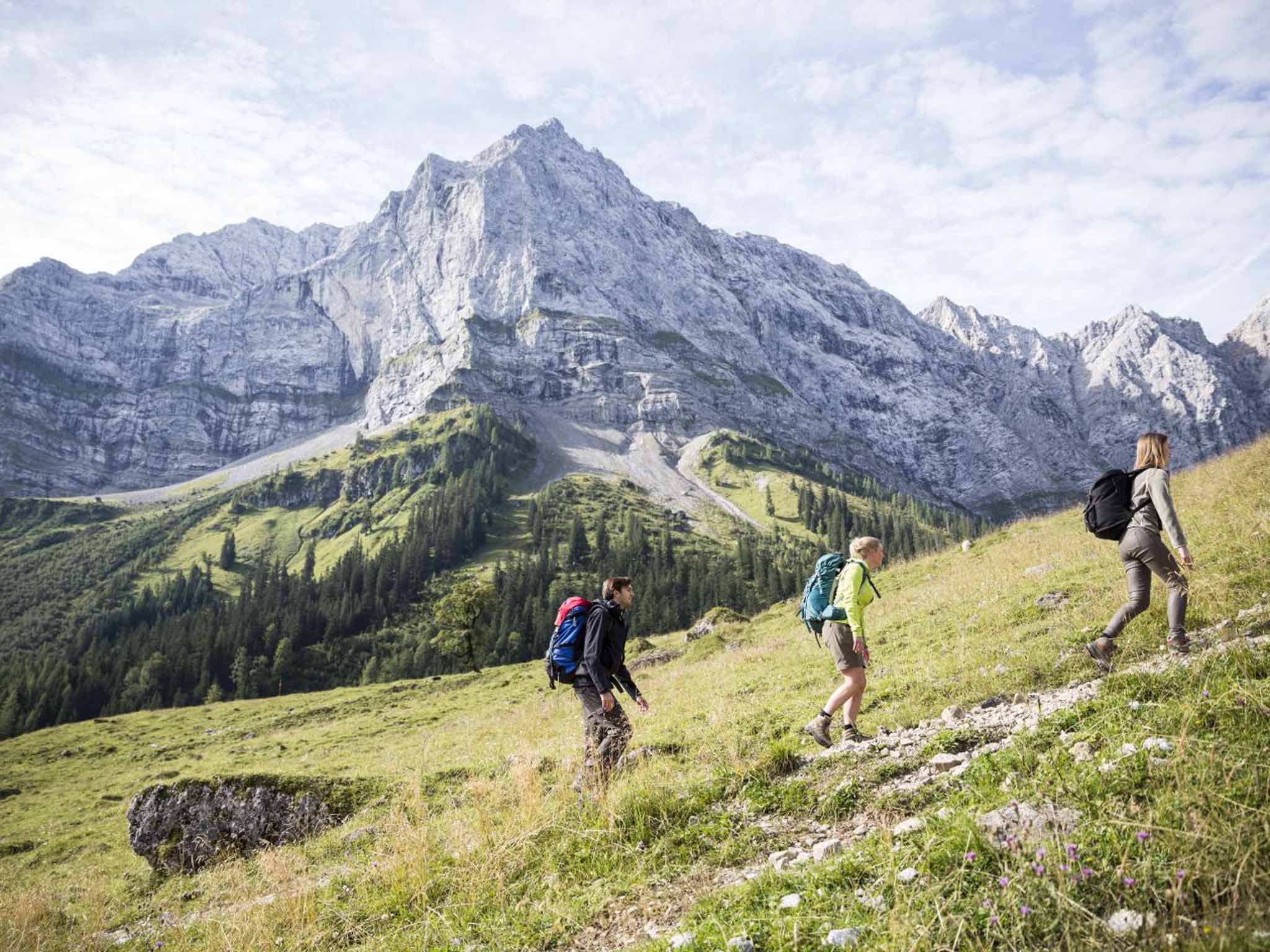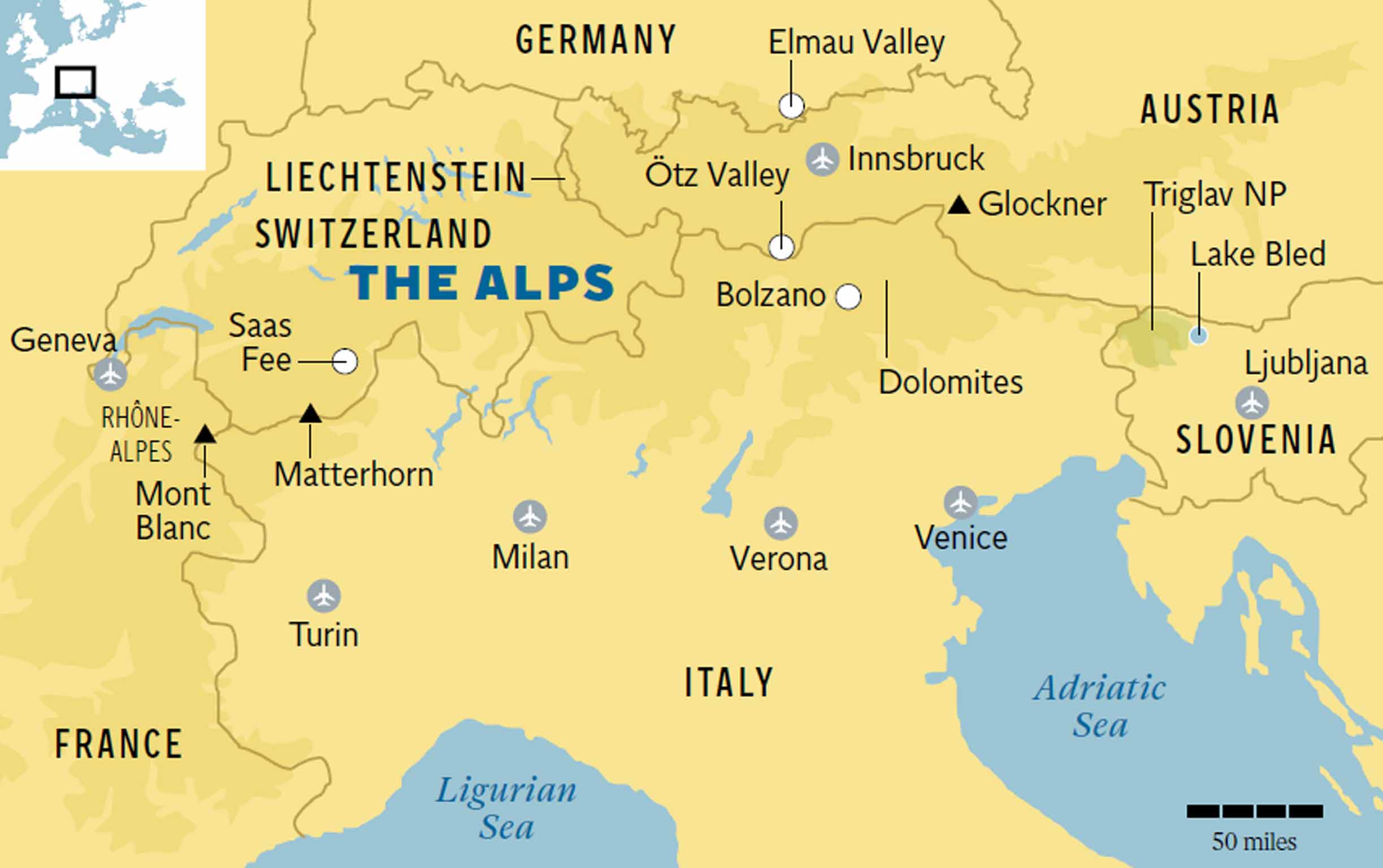The Independent's journalism is supported by our readers. When you purchase through links on our site, we may earn commission.
Summer in the Alps: Lower prices, great walking, and plenty of fun-filled family breaks
Enjoy them on foot, by bike or from the comfort of a hot tub, suggests Emily Rose Mawson

Your support helps us to tell the story
From reproductive rights to climate change to Big Tech, The Independent is on the ground when the story is developing. Whether it's investigating the financials of Elon Musk's pro-Trump PAC or producing our latest documentary, 'The A Word', which shines a light on the American women fighting for reproductive rights, we know how important it is to parse out the facts from the messaging.
At such a critical moment in US history, we need reporters on the ground. Your donation allows us to keep sending journalists to speak to both sides of the story.
The Independent is trusted by Americans across the entire political spectrum. And unlike many other quality news outlets, we choose not to lock Americans out of our reporting and analysis with paywalls. We believe quality journalism should be available to everyone, paid for by those who can afford it.
Your support makes all the difference.Think of the Alps and your mind may turn to images of snowy slopes and après-ski revelry. But in summer, Europe's longest mountain range shows a completely different face. Bears and lynx roam wilder areas while meadows bloom with some 13,000 colourful plant species. High up, the air is pure, and while warm weather isn't guaranteed, there is usually sunshine aplenty.
The Victorians discovered the charm of the Alps in summer when Thomas Cook's tours first ventured over in 1863, and this July marks 150 years since British climber Edward Whymper made the first ascent of one of the range's most famous summits, the Matterhorn. Brits loved the summer season so much that when 19th-century St Moritz hotelier Johannes Badrutt famously suggested holidaying there in winter, they thought he was mad.
There are added benefits to visiting in the warmer months. Prices can be two-thirds lower than in winter, while the variety of scenery – from dark forests to terraced fields beneath rocky pinnacles – is priceless. You don't have to be in it for Matterhorn ascents, either – although visiting Switzerland as Zermatt celebrates the anniversary of that inaugural climb will be worth it for festivities including an open-air theatre (00 41 279 668 100; zermatt.ch). Whether you fancy walking, something more hair-raising, or a fun-filled family break, there is plenty to choose from.
The Alps' main holiday areas are strung across 750 miles and seven countries between the Mediterranean and the Adriatic: Austria, France, Germany, Italy, Liechtenstein, Slovenia and Switzerland.
Austria is often portrayed as the merry cliché – indeed, this year marks the 50th anniversary of the film The Sound of Music. To a certain extent, those expectations might be fulfilled: think domed churches, knee-slapping dances and men in lederhosen.
Across the border, Slovenia remains charmingly undiscovered; here, a wonderland of emerald lakes and limestone crags calls itself the Julian Alps. They extend into Italy, which also has the vertical-walled Dolomites, popular for climbing, and South Tyrol, a cultural enclave of orchards and vineyards. The latter's capital, Bolzano, mingles Germanic and Italian influences and is home to "Ötzi" the preserved iceman.
Marking the boundary between Italy and France is Europe's highest peak, Mont Blanc (4,810m). This summer, there is a new way to experience it. Skyway Monte Bianco, a cable car that ascends from Courmayer, launches this month. Each cabin rotates 360 degrees and screens inside show the view below – captured from cameras embedded in the floor.
However, you'll also get fantastic views of Mont Blanc from Chamonix, over the border in France, where you can pick up the Aiguille du Midi cable car (chamonix.com). Its glass-box viewpoint reopens this month following work to replace the summit lift.
In Bavaria, Germany, fairy-tale castles punctuate the Alps, which peak at just 2,962m, at the Zugspitze summit, granting a summer season that endures after snow has fallen elsewhere.
The central mountainous jigsaw piece is Switzerland, where the Alps cover 60 per cent of its land area. The tourist board's new Grand Tour displays the country to spectacular effect. It is a 1,000-mile road trip that crosses four linguistic regions, five Alpine passes and 11 Unesco World Heritage Sites. Packages start at CHF995 (£719) pp for nine days with B&B, maps and itineraries (00 800 100 200 29; bit.ly/AlpsGrandTour). Rail travel to and within Switzerland is easy to arrange. Voyages-Sncf.com sells tickets from London to Geneva for £240 return in July, changing trains and stations in Paris. A range of rail passes (also covering many bus services) is on offer at swiss-pass.ch.
Companies including Inghams (01483 791 111; inghams.co.uk), Inntravel (01653 617 000; inntravel.co.uk) and Amazon Creek (01865 865 456; amazoncreek.co.uk) offer active packages. New this year is Amazon Creek's Family Adventure in Chamonix with activities such as rock climbing and walking with huskies. The week-long luxury chalet holiday costs from £3,375 for four people, including activities, concierge services and breakfast. Flights not included.
Walk it off
Of the many summer Alpine activities on offer, walking is the main draw for visitors. You need only basic fitness to reach impressive scenery because many ski lifts remain open in the warmer months. From short strolls to multi-day hikes, there is a preened network of signed paths to suit every walker.
Among the long-distance trails is the thigh-burning Eagle Walk (tyrol.com/eagle -walk). It celebrates its 10th anniversary this year with two simplified routes: one comprising 24 daily stages across the mountains of north Tyrol and the second passing through nine stages on the Glockner and Venediger mountain ranges in east Tyrol.
For accessible off-the-beaten-track walking, try Slovenia's Lake Bled area. HF Holidays (020 8732 1250: hfholidays.co.uk) offers a trip that ventures into Triglav National Park, from £899pp for seven nights' half-board, guided walks and flights.
If you can afford to splurge on a once-in-a-lifetime experience, book a heli-hiking trip in Switzerland: you'll be deposited in remote corners and led over ice fields and ancient trade routes. SwissSkiSafari (00 41 792 394 152; swissskisafari.com) charges from CHF1,000pp (£742) with helicopter transfers and guides included.

Adrenalin rush
The Alps wouldn't be the Alps without a few white-knuckle activities – whether it's getting wet or being suspended in mid-air. One playground for thrill seekers is the Rhône-Alpes in France. The almost 200-year-old Chamonix Guides Company (00 33 450 530 088; chamonix-guides.com) has a half-day of rafting, canyoning and hydrospeed for €40.
For dry-land exhilaration, give a via ferrata a whirl. The Italian Dolomites are peppered with these cliff-mounted handrails, bridges and ladders, and you can experience them on Exodus's eight-day Introduction to Via Ferrata (056 631 86 64; exodus.co.uk). It costs from £1,249pp, including half-board accommodation, guides and flights.
For a tamer, though still pretty vertiginous, experience, try a pedestrian suspension bridge. The new Highline 179 (highline179.com) in the Tyrolean town of Reutte claims to be the longest of its kind at 400 metres. Get your thrills for €8.
On your bike
Many Alpine resorts are geared up for mountain biking. Among the best areas are Saas-Fee in Switzerland, the Portes du Soleil in France, and the Otz Valley in Austria, where there is a slew of properties certified as bike friendly, with lockable storage rooms, repair kits and guided tours.
This summer, the valley welcomes a "Prime Line" leading 6km downhill from the Gaislachkogelbahn in Sölden (00 43 572 00 200; soelden.com). Enjoy half-price lift passes, starting at €10, on opening day, 20 June.
However, the Alps aren't just about hurtling descents. There are options for all abilities. Zenith Holidays' self-guided glamping and cycling tour around Lake Bled is rustic (overnight shelter in wooden huts) but with a few surprising perks – some come with a hot tub (0203 137 7678; zenithholidays.co.uk). The 190-km trip costs from £262pp, including seven nights' self-catering accommodation, bike hire and transfers, but not flights.
Never mind the rain
Resorts such as Montgenèvre in France report some 300 sunny days each year, but when it rains in the Alps, it really pours. Luckily, wet weather needn't scupper your holiday. Indoor (well, underground) options include caves – Skocjan in Slovenia has one of the world's largest known underground river canyons (park-skocjanske-jame.si).
Elsewhere, South Tyrol's "wine road" comprises 16 cellar-filled towns (suedtiroler-weinstrasse.it) and modern attractions such as Swarovski Crystal Worlds (00 43 522 451 080; kristallwelten.swarovski.com), near Innsbruck. The museum reopened in May after a €34m refurbishment and is crammed with sparkling installations; worth the €19 entry fee.
If truly grim weather, nothing beats thermal baths. Mineral goodness can be found in Aix-les-Bains in France and Leukerbad, Switzerland (00 41 274 727 171; leukerbad.ch) – the Alps' largest wellness resort. Its six-day Mountain & Spa pass costs from CHF160 (£119). Go early or mid-week to avoid crowds.
Where to stay
Alpine accommodation ranges from weathered mountain refuges to swish spas and designer hotels. Berninahaus (00 41 81 842 62 00; berninahaus.ch), a cosy former farm high in Switzerland's Engadine, is a venerable example of the former – it turns 500 this summer. Rooms start at CHF200 (£140), B&B.
It scarcely gets more luxurious than Bavaria's "Sightsleeping" portfolio, a collection that includes castles and palaces. The recently admitted Das Kranzbach (00 49 882 392 8000; daskranzbach.de) is an English-style pile in the Elmau Valley with a spa and activities programme including yoga, hiking and biking. From €185 euros per person half-board.
Economy comes in the form of hostels and campsites – some with awe-inspiring views. At the award-winning Les Dômes de Miage in the Rhône-Alpes (00 33 450 934 596; camping-mont -blanc.com) you can wake up to Mont Blanc from €21.20 euros per night for a pitch and parking space.
Getting there
Gateway airports include: Zurich (three hours from Zermatt); Geneva (1.5 hours from Chamonix); Innsbruck (1.5 hours from Sölden); Venice Marco Polo (two hours from Cortina d'Ampezzo); and Ljubljana (30 minutes from Lake Bled). Among the many airlines flying to the region include British Airways (0843 493 0787; ba.com), Swiss (0345 601 0956; swiss.com) and easyJet (0330 365 5000; easyjet.com). You can also reach the Alpine gateway city of Lyon on Eurostar (03432 186 186; eurostar.com) from London in under five hours from £89 return.
Getting around
Taking the train is scenic and avoids traffic jams, which can be particularly intense in July and August. The June and Summer editions of the European Rail Timetable (europeanrailtimetable.eu) have just been published, and can be ordered for £15.99/£17.99 respectively, plus P&P. Seat61.com has excellent online guides for travelling to and through each Alpine country, even including Liechtenstein, while Interrail (interrail.eu) offers multi-country travel passes. To get off the beaten track, renting a car helps, as public transport is infrequent in remote areas.
Click here to view tours of Switzerland, with Independent Holidays.
Join our commenting forum
Join thought-provoking conversations, follow other Independent readers and see their replies
Comments